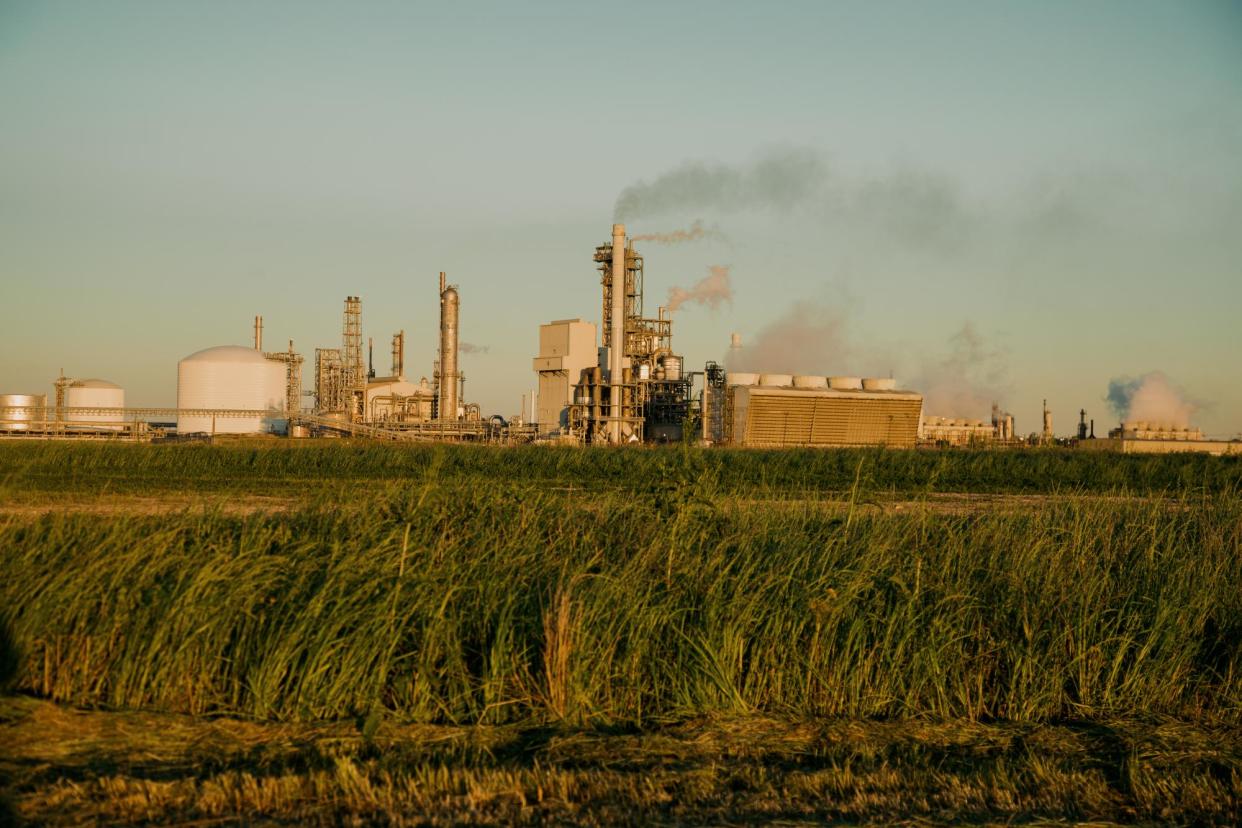Air in Louisiana’s ‘Cancer Alley’ likely more toxic than previously thought

The air throughout south-east Louisiana’s “Cancer Alley” is probably being poisoned with a highly carcinogenic gas at levels much higher than previously thought, new research reveals.
Using cutting-edge equipment that more accurately checks for the gas, ethylene oxide, which is primarily used in plastic production, researchers found levels over 1,000 times above previous measurements, and about 10 times higher on average than regulators’ modeling.
The levels pose a “worrisome” risk to residents and workers in the region, especially children, said Pete DeCarlo, a Johns Hopkins University researcher and senior author on the paper. Residents in the region are majority low-income and African American.
“I don’t think there’s any census tract in the area that wasn’t at higher risk for cancer than we would deem acceptable,” DeCarlo said. “We expected to see ethylene oxide in this area. But we didn’t expect the levels that we saw, and they certainly were much, much higher than EPA’s estimated levels.”
Ethylene oxide is linked at low levels of exposure to multiple cancers, DNA damage, lung injury and other serious health issues. It’s used in production of other chemicals for plastic and in a fumigation process for sterilizing surgical equipment and food canisters. Though ethylene oxide is emitted from industrial plants around the nation, it’s most widely used in Louisiana because of the high number of chemical facilities.
The most common exposure route is inhalation. The EPA found a cancer risk in air samples at 11 parts per trillion, an exceptionally low level compared to many other common air pollutants, like ozone.
Related: New US rules aim to crack down on toxic air pollution by steelmakers
“This is a really, really, really small amount,” DeCarlo said, which is why getting an accurate reading on the levels is essential, he added.
The Environmental Protection Agency collects air samples in and around facilities that emit the gas and takes them to labs for measurement. But the gas quickly changes once in a sampling container and its true volume becomes difficult to measure.
Researchers spent a month during winter 2023 repeatedly driving a heavily industrialized route along the Mississippi River between New Orleans and Baton Rouge, collecting air and testing it in real time as they drove past large industrial facilities and nearby residential areas.
The equipment detected plumes that were up to seven miles long coming from some facilities, showing that the gas is concentrated enough at that distance to still present a health threat. East Ascension high school in Gonzales, Louisiana, is about five miles from one of the identified ethylene oxide hotspots.
It’s unclear if the chemicals are being released from stacks or as fugitive emissions that escape through piping or equipment throughout the plants.
The EPA in 2018 established lower cancer risk levels for the chemical, DeCarlo said, noting that industry disagrees with the agency’s assessment. It is classified as a hazardous air pollutant, so the government aims to allow zero emissions, but polluters are given permits to emit some of the substance each year.
Using an EPA tool that weighs a chemical’s total hazard in the region, researchers found ethylene oxide comprised 68% of the the threat for hazardous air pollutants in “Cancer Alley”.
Though the tool paints a broad picture, “the fact that so much of the environmental risk in this area seems to come from a single chemical is remarkable”, the authors wrote in the study.
DeCarlo said researchers focused on ethylene oxide because it is so carcinogenic and very little data exists, but he noted it’s only one of countless chemicals that people in the area are exposed to.
“The reality is people aren’t just breathing ethylene oxide, they are breathing a whole soup of chemicals,” he said. “When you start to add everything up it becomes a much more problematic picture.”

 Yahoo News
Yahoo News 
